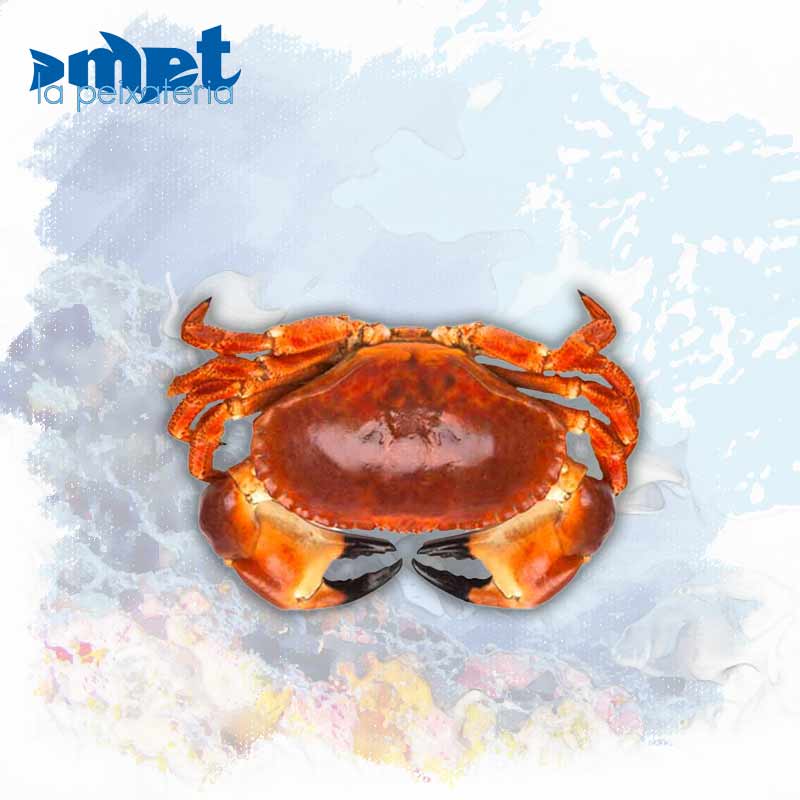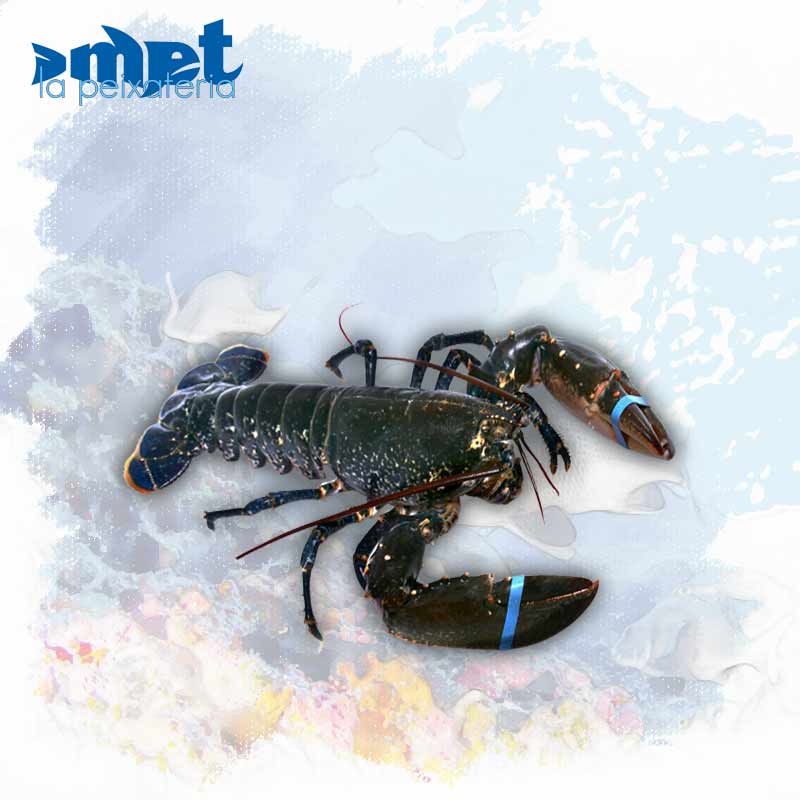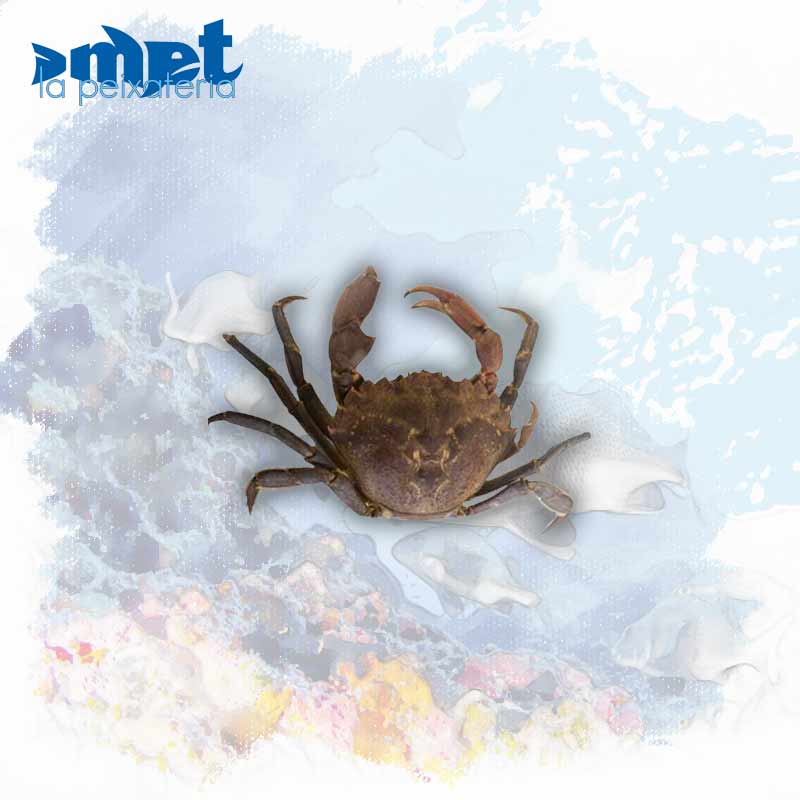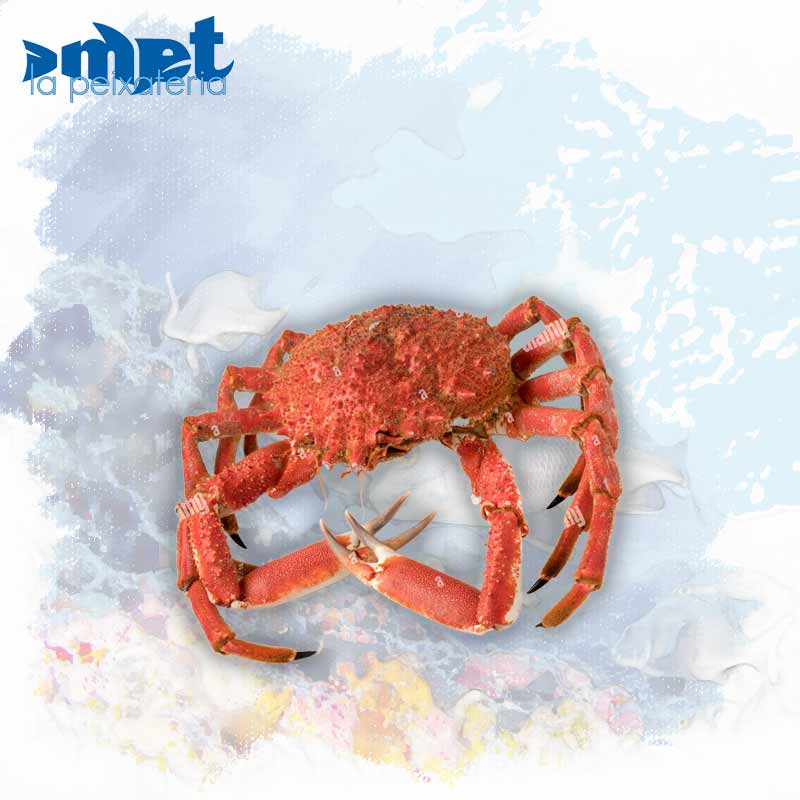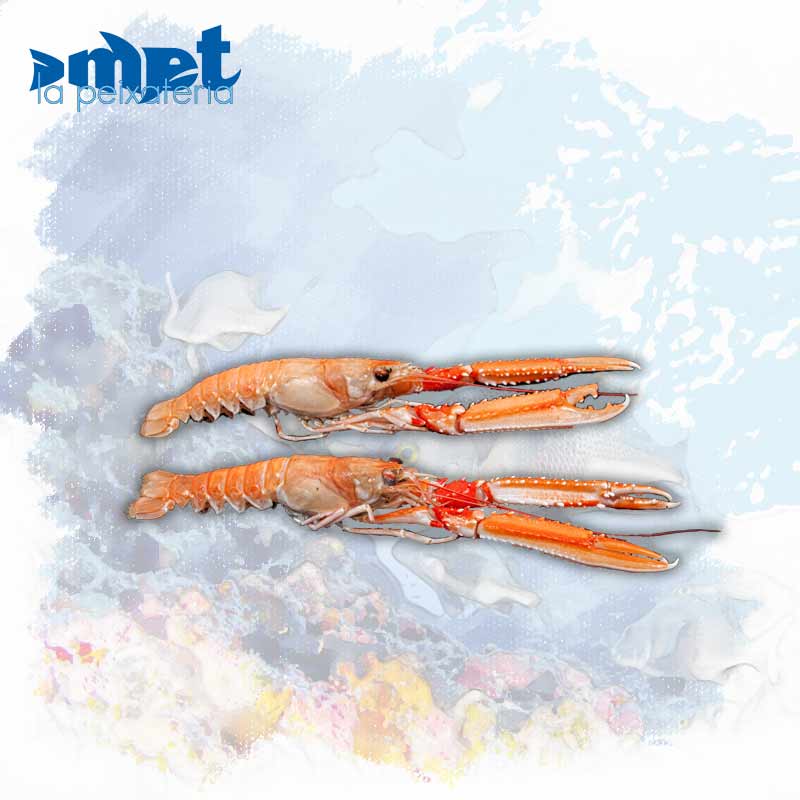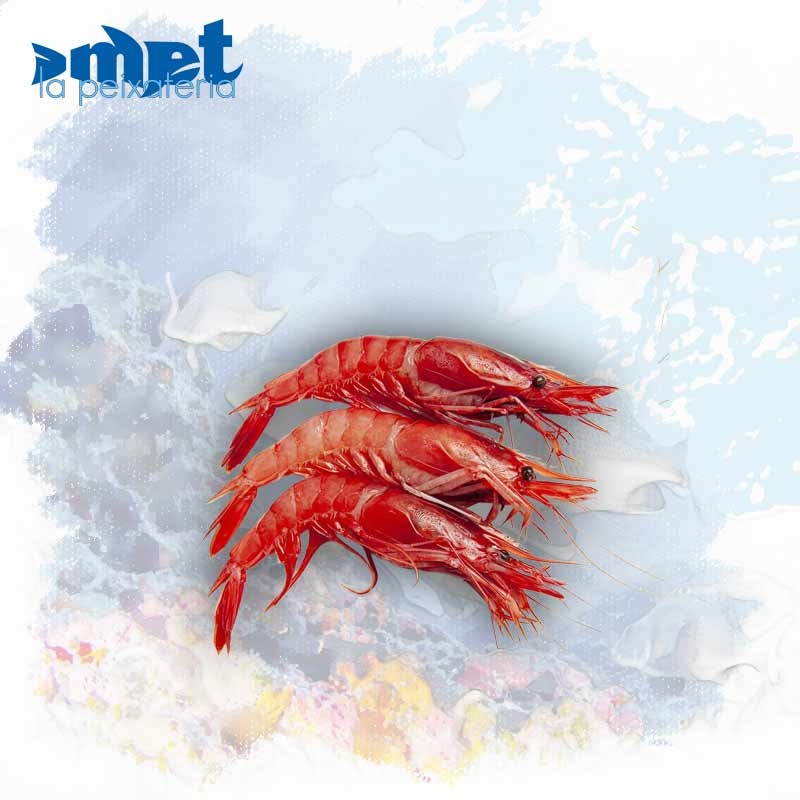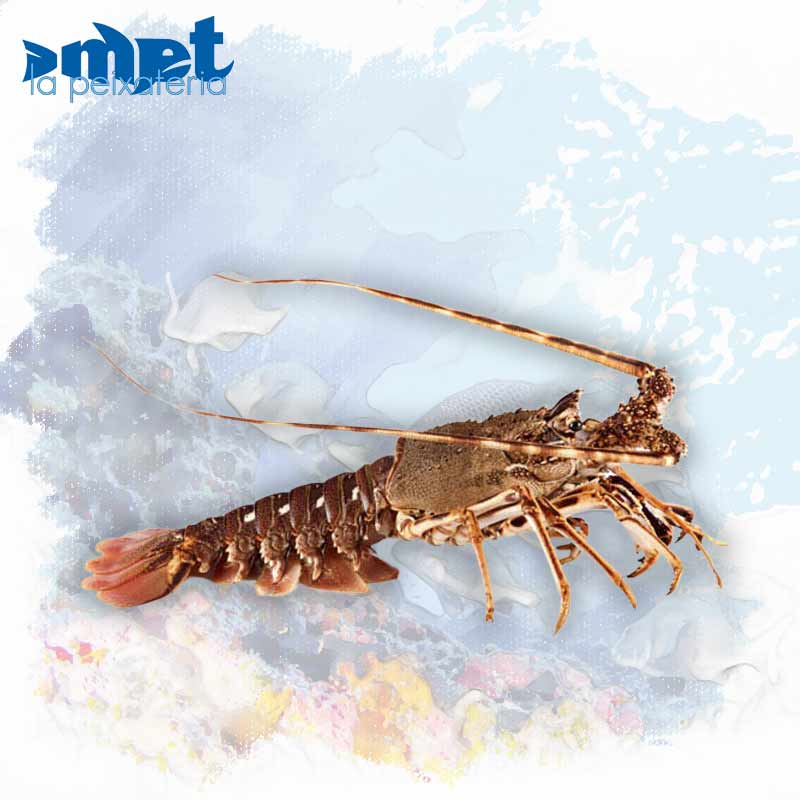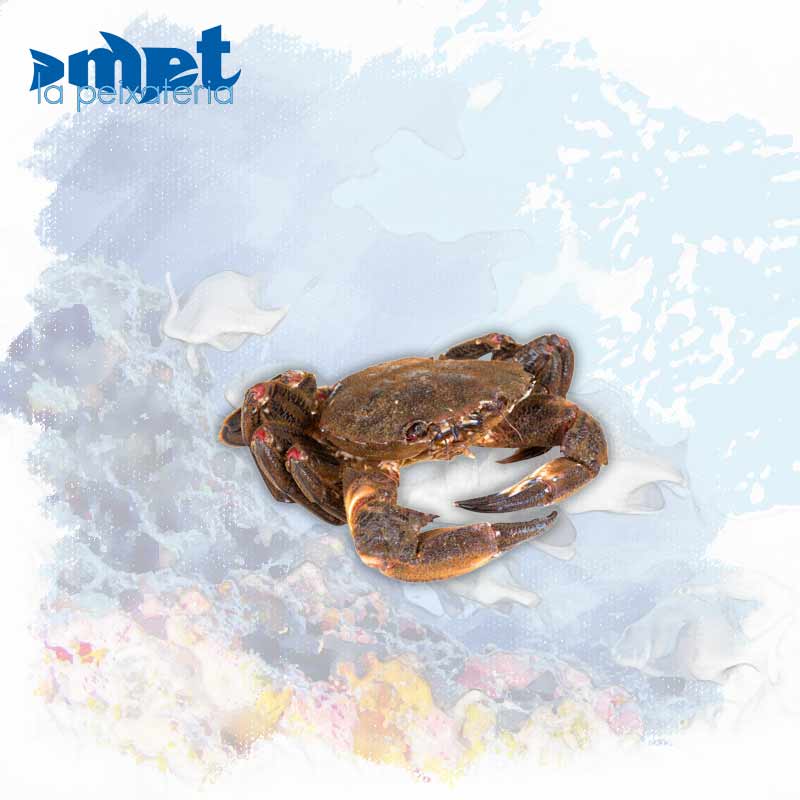This group of marine species includes a great diversity of species that apparently by their shape and general appearance have nothing in common, although many of them maintain very close ties.
In all the group of basic form the species with shell and with shell abound although in the group of the shellfish also are included those that have tentacles or thorny as it could be the case of the octopus or the sea urchin. Within the definition of shellfish we can define as invertebrate and edible marine animal with a classification in three big groups that are, crustaceans, mollusks and echinoderms.
In the case of crustaceans, the shell is an outstanding characteristic of them, belonging to this subspecies shrimp, prawns, crayfish, lobsters, lobster, spider crab, lobster, crab, crab, crab, crayfish, barnacles, barnacles and prawns basically.
Within this group we can include another subspecies such as the sea urchin whose subspecies belong to the echinoderm group, which has a body protected by a carapace full of spines.
In general, as defined by the Larousse Gastronomic Encyclopedia, seafood is the name given to any edible invertebrate marine animal.
Brown Crab
The Brown crab is also known as European crab, it is one of the most economical seafood within the price range, which has a highly developed first pair of legs with claws, which is the most precious part of this seafood since its meat is especially tasty. and delicate, it is very abundant in the Cantabrian and Mediterranean Atlantic that can be found in various parts of the world, commercially the females are more appreciated for having more meat than the males. At our stall you can find fresh brown crab, ready to cook
Like all seafood, it is very rich in protein, iodine, potassium, iron and B vitamins.
The most suitable type of cooking for this seafood is boiled, the best preparation to enjoy its flavor to the fullest. In this case it is important to submerge the live sea ox in plenty of water well saturated with salt (one tablespoon of salt for every liter of water is recommended). The water in which it is submerged must be cold to prevent the seafood from shaking its legs and breaking it and bring it to a boil, which will be between 15 -30 minutes from when the water starts to boil, depending on the weight in a range of 500 g to two kilos, it is interesting to put a laurel leaf in the water and once the cooking time has elapsed, submerge it for 10 minutes in cold water with ice. It can be consumed directly or with specific sauces prepared for seafood.
Lobster
It is very common to confuse this seafood with the male spiny lobster, and nothing could be further from the truth. They really are two absolutely different species even though in Anglo-Saxon countries they are both known by the same name, although their flavor and prices are diametrically opposed. The lobster always has two front legs in the shape of two large defensive pincers and its shell is absolutely dark, and it is a seafood that you will find fresh and alive at our stop, they all always have elastic bands to hold the inks closed and avoid defensive fights that spoil the seafood and are also easy to handle, avoiding painful pinching. At our stop you will find lobster from Canada at a more economical price and national lobster of a higher quality, in both cases fresh and live.
Like all seafood, it is very rich in proteins, minerals, vitamins of group A and B, among which niacin stands out.
As all seafood can only be eaten cooked, it is especially recognized in seafood rice, “salpicón” and all types of seafood dishes with sauces.
Crab
It is one of the so-called complementary seafoods since it has little meat but is substantially very rich for depending on what dishes, it is relatively inexpensive and can be found on all the rocky coasts of the Mediterranean, Atlantic, North Sea, etc. Its abundance ostensibly marks its final price.
It is a good source of quality protein and has a large amount of minerals, phosphorus, zinc, potassium and group B vitamins.
In cooking it is basically used, crushed and boiled in short broths, in bases for sauces, seafood creams and smoked for different sauces and preparations.
.
Spider crab
Spider crab is without a doubt the king of seafood from the group of crabs, highly prized throughout the country and a star dish in places such as Galicia, Asturias, Cantabria and the Basque Country, although it is also consumed in other communities, with quite similar preparations. Unlike other crustaceans, the female is smaller than the male, it is a seafood especially consumed in winter, at our stall you will find live crab, to prepare it to your liking in your kitchen.
Crab over crustaceans, which has more trace elements, has a large amount of high-quality proteins, minerals such as selenium, phosphorus and zinc, which are so necessary for our body, magnesium, iron, vitamin B6, and vitamin E.
Crab is another of the shellfish that is basically best consumed only cooked in water saturated with salt and a bay leaf. You have to be careful with the cooking times since, as happens with other crustaceans, excessive boiling causes the meat to become empty. , therefore it is advisable after cooking, depending on the weight, to place them in a bowl with ice water to interrupt their cooking, from this preparation onwards to multiple dressings and additions that can be made using the body as a bowl in different preparations that they vary depending on the area and that all of them are gastronomically unbeatable.
Norway lobster
Norway lobster It is one of the most appreciated seafood, crustaceans in gastronomy for its soft and tasty meat, it can be found on all European coasts of different latitudes and curiously, it is so appreciated in places, on whose coasts it is very abundant and of quality, such as in the east coast of Great Britain, is little consumed in the country and in this case almost all the fishing goes to markets such as France and Spain with a high quality product that is generally sold frozen. It will also be the curious fact that in Great Britain and despite having an English name, Norway lobster, it is little consumed and is also generally known by the Italian name of “Scampi”. Our stop will be able to purchase crayfish of different calibers from national extraction, the freshness of which means that sometimes you can even purchase them live despite the fact that it is a crustacean that does not last long out of the water.
Despite being a seafood that allows for many preparations, the best way to consume it to savor its qualities is grilled and, above all, with very quick cooking, sometimes it is presented in restaurants that are very overcooked, which means they have been eliminated its juices and taste properties. The best way to preserve their qualities is to grill them on a layer of coarse salt and cook them in total on both sides for no more than four minutes (depending on their caliber) and in our opinion, in no case should they be grilled. They must be cut in half lengthwise as this initially loses all its juices and makes it difficult to enjoy this exclusive delicacy. Smaller and lower quality crayfish are perfect for fish stews and paellas.
Shrimp
Shrimp is perhaps one of the most popular seafood in our country, at our stop you can find it, in different calibers and qualities from different extractions and national origins such as the exclusive Shrimp from Palamós, the exquisite prawn from Vilanova, the popular Shrimp from Huelva, rice shrimp and red shrimp of local and national extraction.
It is an exquisite food that provides us with few calories, very rich in almost all the vitamins of the known range, high in protein and minerals and Omega 3 fatty acids.
It is a seafood that allows many preparations but really the best way to consume it to savour its qualities is grilled and, above all, with very quick cooking, sometimes it is presented in certain restaurants very overcooked, which means that its juices have been eliminated. and taste properties. The best way to preserve their qualities is to grill them on top of a layer of coarse salt and cook them on both sides in total for no more than three minutes to enjoy this exclusive delicacy. Smaller, lower-quality shrimp are perfect for fish stews and paellas. It is also consumed as an exquisite appetizer in cooked format and with coarse salt, widely consumed, especially in bars and tapas places in southern Spain.
Spiny Lobster
Considered one of the most luxurious crustaceans in gastronomy, it is not exactly the one with the most taste qualities, although its meat is very tasty and of unbeatable quality. It is a very popular seafood throughout the world, although there is a lack of knowledge, especially in the Anglo-Saxon world, of this product, since it is marketed under the same name as lobster, although they are absolutely different animals with a different gastronomic quality and although their name is in English. It has become popular as Lobster (lobster), its real name in English is Spiny lobster, langustas, langouste (due to French influence), or rock lobsters, although in Commonwealth countries and former British colonies it has different names. There are three main types of European lobster, the most exquisite and gastronomically prized: the one from the two American continents with a lighter flavour and the Asian one with taste qualities similar to the Caribbean ones.
It is a crustacean that stands out for its high level of minerals and vitamins B 12 and niacin and with a low amount of fat and very healthy for diets, although it is a high-priced product.
The best way to taste this delicacy is to cook it in water saturated with salt, starting at a time of 13 minutes for half a kilo. The crustacean is immersed in the already boiling water. Care must be taken to tie its tail to avoid splashes of boiling water. may cause injuries and at the time of submerging the medium heat sequence, leaving it submerged for another minute with the heat off, immediately place it in a bowl with cold water with ice to interrupt the cooking and it is ready for tasting with accompaniment of different sauces, for smaller lobsters you can cut them lengthwise and grill them on a layer of coarse salt, trying not to put them on the open side on the grill to avoid loss of juices.
.
Prawn
The prawn is another of the popular crustaceans in the gastronomy of our country. It is a seafood of high gastronomic value, perhaps less tasty than the shrimp but equally appreciated. It is a seafood that we can find in all the seas of the world and especially abundant in the sandy mouths. Of the Rivers in Spain, those at the mouth of the Ebro Delta and those of the Huelva estuary are especially appreciated. The most popular gastronomically is the so-called tiger prawn due to its brown bands, and the other most common species is the white prawn. In both cases, once cooked, its color changes to a reddish tone. Another seafood that in English-speaking countries is called indiscriminately and is confused with shrimp in a similar shape but with a totally different color, texture and flavor
In their dietary aspect, they are an important source of iron and high-value proteins and have a high contribution of iodine, magnesium, potassium and phosphorus.
Like shrimp, the best preparation is grilled in a short cooking time on a bed of coarse salt to preserve all its substantive values. It is a widely consumed product in a salt-cooked format, typical of many appetizers. It can be used in fish stews and paellas.
Velvet Crab
The velvet crab is a very abundant seafood on the Atlantic coasts, which lives on rocky sandy bottoms and is highly appreciated by seafood lovers, for the quality and flavor of its meat. It belongs to the crab family but it is a crustacean that once cooked has more tasty meat than those of the same species. It is a difficult seafood to taste, but its special structure places it as one of the most precious seafood, for the consumers. The velvet crab of Galicia are especially popular and well-known.
It is a crustacean very rich in proteins of high biological value, with a great contribution of minerals such as iron, phosphorus, zinc and potassium, with a good contribution of iodine
The velvet crab is mainly consumed cooked to maintain all its taste properties. It is cooked in water saturated with salt and a bay leaf. If the crustacean is alive, it must be placed in cold water to prevent its legs from coming off, and to keep them for seven minutes at a boil from when the water begins to boil, at which point they are removed and allowed to cool. Some prefer to consume them warm but generally we advise them to be consumed cold. You have to be careful with cooking because if they overcook of it they remain very empty.


